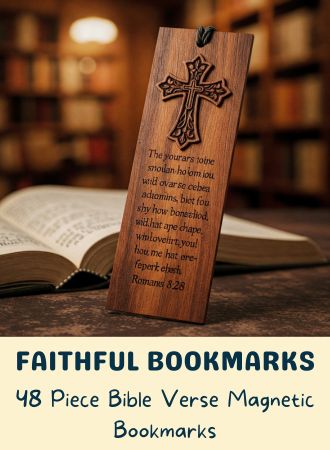Comparing The Catholic Bible and King James Version
Unraveling the Differences
The Catholic Bible and the King James Version (KJV) are two prominent translations of the Bible that have shaped the religious landscape for centuries. While both versions share similarities, they also exhibit significant variations in their texts.
In this blog post, we will explore the nuanced differences and shed light on the historical and theological aspects surrounding these translations.
This blog post contains affiliate links. When you click on a link on this page and make a purchase I may earn a small commission, at no additional cost to you. Thank you for your support.
Understanding the Catholic Bible and King James Version
The Catholic Bible
The Catholic Bible, also known as the Vulgate, encompasses a collection of sacred books recognized by the Catholic Church. It consists of several sections, including the Old Testament, Deuterocanonical books (also known as the Apocrypha), and the New Testament.
The Catholic Bible draws upon ancient Hebrew, Aramaic, and Greek texts, providing a comprehensive spiritual guide for Catholic believers.

The King James Version (KJV)
The King James Version, also referred to as the Authorized Version, is an influential English translation of the Bible. Commissioned in 1604 by King James I of England, the KJV was crafted by a committee of scholars utilizing Hebrew, Aramaic, and Greek manuscripts.
It aimed to provide a common, accessible English translation for Protestant Christians at the time.
Experience the timeless beauty and profound wisdom of the King James Version (KJV) Bible. This classic translation has captivated readers for centuries with its elegant language and poetic rhythm. Immerse yourself in the rich history and spiritual depth of Scripture as you follow in the footsteps of countless believers who have found solace, inspiration, and guidance in its pages.
The KJV Bible is perfect for those who appreciate the traditional language of the Bible and desire a deeper connection to its historical context. Whether you’re a lifelong student of Scripture or new to the Word, this timeless text offers a wealth of spiritual insight and understanding.
Experience the power of classic language: Let the words of the KJV transform your prayer life. Order your Bible now.
Variations and Textual Differences
Canon Differences
One of the significant contrasts between the Catholic Bible and the KJV lies in their canons.
The Catholic Bible includes additional books in the Old Testament known as the Deuterocanonical or Apocryphal books, such as Tobit, Judith, Wisdom, Sirach (Ecclesiasticus), Baruch, and First and Second Maccabees. These books are not present in the KJV, as it adheres to the narrower Protestant canon.
Discover the comfort and clarity of the New American Bible, Revised Edition (NABRE) in a large print format. Designed with your reading ease in mind, this Bible features a larger font size that makes it easier on the eyes, allowing you to fully engage with the Word of God.
The NABRE offers a modern translation that is faithful to the original text while being accessible to readers of all levels. Experience the power and relevance of Scripture as you encounter familiar stories and teachings in a fresh and inspiring way.
The NABRE Large Print Bible is ideal for those who prefer a larger font size or have difficulty reading smaller print. It’s also a wonderful choice for those who appreciate a contemporary translation that maintains the richness and depth of the original text.
Enjoy effortless reading: Make Scripture a daily part of your life with the NABRE Large Print Bible. Order yours today.
Textual Variances
Another area where the Catholic Bible and the KJV differ is in the choice of source texts and translation methods.
The Catholic Bible draws primarily from the Latin Vulgate, while the KJV leans on the Masoretic Text for the Old Testament and the Textus Receptus for the New Testament. As a result, certain verses may be worded differently or contain variations in meaning.
Linguistic and Stylistic Variances
Given the difference in historical contexts and linguistic nuances, the Catholic Bible and the KJV also exhibit distinct writing styles.
The KJV employs archaic language and prose, reflecting the Jacobean era when it was translated. On the other hand, the Catholic Bible, especially in modern versions, tends to employ language that aligns with contemporary linguistic patterns.
A Matter of Faith
It’s important to note that the variations between the Catholic Bible and the King James Version should not be seen as undermining the significance or validity of either translation. These differences arise from theological, cultural, and historical factors, shaping the religious traditions they serve.
Ultimately, individuals choose their preferred translation based on personal preference, religious affiliation, or the desire to engage with a specific interpretation of the Scriptures.
Both the Catholic Bible and the King James Version have profoundly impacted the lives of countless believers throughout history and continue to do so today.
NOTE: This blog post aims to provide an objective overview of the topic at hand. It is always recommended to refer to authoritative religious sources or consult with clergy members for deeper theological insights.
If you found this content helpful, you can support Moody Catholic and keep this blog ad free by making a donation of any amount. Learn more by reading the – Support Our Blog page.
Highlight Your Journey: Essential Bible Highlighters
Enhance your Bible study experience with this set of 8 vibrant, non-bleeding gel highlighters from Mr. Pen. Perfect for highlighting key verses and passages in your ESV Study Bible, these highlighters offer smooth application and long-lasting color.
Elevate your Bible study with these must-have highlighters. Click link to purchase your set today.
Thank you for visiting my Moody Catholic blog. If you enjoyed reading this article please tell others by clicking on the share button in the lower right hand corner, right underneath the scroll to top arrow.

